-
Posts
448 -
Joined
-
Last visited
Content Type
Profiles
Forums
Gallery
Events
Posts posted by Brucealanevans
-
-
After about a month of going downstairs to the shipyard, and looking at 4 7 layer wood sandwiches waiting to be hollowed/carved and deciding to do something else, I decided to force myself to get back to work on the whaleboats. I'm sure that the admiral's proclamation that I could not start a new project until they were done had nothing to do with it!
So each day I brought a boat to stage one (inside hollowed out and outside sanded down) for 4 days. Then each day bringing one boat to stage two (fine shaping, installation of rails, keel, bow chocks, and rubbing strips). 8 days and this is where I am right now. About 4-5 hours each day (some waiting for glue to set).
Now I'll put the ribs (visible ends), taper them, and install the first two runs of the ceiling planking on all four boats as stage 3.
-
I decided to move ahead with one whaleboat, just to figure out how to approach the construction, what tools and wood to use, etc.
I have finished one to the primer stage shown below, but now have decided to get them all to this stage before doing the detailing.
It's a lot of work, and I suspect doing another four will take me some time as I only spend a few hours 4-5 days a week working in the shipyard, and we've been doing a fair amount of traveling.
I did have my first opportunity to fire up my new Byrnes thickness sander to create some 1/64 thickness sheet for these.
-
-
The whaleboat, which I have built, is the easiest to plank because the planks are pre-cut, and as long as you keep the order and the fore-aft orientation straight, you can't go wrong.
Having said that the model itself is not a "beginner". You construct an inverted form with "bulkheads" and build the model over that. The planks themselves are a combination of clinker (overriding the adjacent plank with some angled edge sanding to get the proper orientation) and edge to edge supported by an underlying batten. The ribs themselves are added after removal from the form, so it's not a "framed" build.The planks are glued to each other and, for the edge to edge planks to the underlying batten and not to the "bulkheads". Excess glue and especially glue that gets between the planks and the form "bulkheads" can make the removal process "exciting".
Although not a "beginner" it was the first ship I built, although with more experience now I know I would have done a better job if I were to build it today.
The included book is great and all the resource you need.
Good luck.
-
On to the whaleboats.
Each is made up of 7 lifts glued together and then carved/sanded to profile.
I glued all seven sets, and set to work on the boats that will be the spares stored upside down on the boat bearer/shelter of the Morgan.
My references suggest that these were primed only, to be painted when needed to replace a lost boat.
Below are the two boats, one with only the fore and aft profile sanded and the other (exterior shaping) complete. About 3 hours work to turn the left hand example into the right hand result.
- tarbrush, russ, Salty Sea Dog and 6 others
-
 9
9
-
Thank you.
This makes great sense to me and mirrors what I originally thought about the iron goods and rust. The line tub weight is an excellent point. I have read both Moby Dick and Heart of the Sea and your post has tickled my memory about bringing goods to the boats prior to launching.
I appreciate the reply.
Bruce
-
Thanks to all, especially for the pictures.
I have previously built the MS New Bedford Whaleboat so I know the equipment - just not certain how much to add to the 5 inch long whaleboats of the Morgan's davits. I like the look of the Lagoda model whaleboat contents and will try my best to duplicate that in this scale - mast/sail, oars, paddles, line tubs with canvas cover, rudder in stored position, and probably the line up front that the harpoons were connected to.
Bruce
-
As I work on the whaleboats for my Charles W Morgan build a question has come up I cannot find an answer for in my scanty references.
What equipment stayed in the boats when stored and lashed on the davits? At least the furled sail and mast I suspect and probably the oars lashed down. What about the line tubs with their canvas covers?
What was brought on only when preparing to launch? Implements (harpoons, lances and so on), water cask, etc.?
I'm not at all sure that having the stored boats "fully equipped " is realistic unless immediately ready to launch.
Anyone have references?
Bruce
- mtaylor, Jack12477, CaptainSteve and 2 others
-
 5
5
-
Finished the cutting in stage today.
The Morgan (ship) is done.
I'll put it somewhere safe and begin working on the whaleboats. Since I've been ignoring other projects and interests to push to get to this stage, I'm going to limit myself to mornings in the shipyard till the whaleboats are done and mounted.
Here's the cutting in stage:
- GrantGoodale, hexnut, IgorSky and 9 others
-
 12
12
-
The drawback to learning on the go (first rigged ship) is that it's like having your first grade, fifth grade, and eight grade school projects jumbled up and presented together.
On the plus side I've learned better ways to do most things and stuff NOT to do.
I'm fairly pleased with it tho, for all its little warts.
-
Running rigging is now done.
New candidate for repetitive mindless job of the month: making dozens of rope coils for the belay point (last picture).
The rest are views of the essentially complete Morgan with coils for the spider bands and mainmast pinrail yet to be placed. I was hoping to be completely done (except the 7 whaleboats) before I leave the country for a week, but the coils took longer than expected and I won't have time to do the cutting-in stage and the paint touch ups here and there that it needs.
Only a day or two work remaining.
-
Thanks for the likes.
Today's task is painting the last set of blocks white, for the braces but also for the tack lines (sheets) for the two jibs I've set (forgot those in my enthusiasm at being almost done with the rigging!).
First post in this log 3 years ago, about 2 months after I started the build.
I'll post a full set of pictures once the rigging and cutting stage are done, as the boat goes into its case awaiting the project of building 7 whaleboats. I'm looking forward to a miniature carpentry task after all this rig(ing)amarole.
-
I haven't posted progress because the foremast was just duplication of the mainmast yards, and I also took a week or so away to recharge. Having said that, I must be learning something from this process since the foremast went easier (altho the belay points were also more accessible, which helped.
Certainly doing the Morgan for my first truly rigged ship turned out to be a real challenge. Some bits don't bear real close inspection, some lines had to be spiced, etc. etc.
At any rate, the running rigging is now done except for the braces and placing rope coils. I expect that to take me a week or perhaps two. Then the Morgan goes into it's case in the living room while I build the whaleboats. Unless I add the cutting stage first.
- texxn5, schooner, Tim Curtis and 10 others
-
 13
13
-
I wish I had done this, Maze of ropes and spars is right.
- mtaylor and thibaultron
-
 2
2
-
Rob
My Morgan (build log in progress) is the first fully rigged ship I've attempted. Been working on it for 3 years. With more time now that I'm retired (I'm 67). The end of the running rigging is in sight!
It is a challenging build with a lot of scratch work but I've learned a lot, and if the result is not contest worthy it (so far) is certainly "living room" worthy and I love just looking at it. I'm glad I took the challenge. Have fun and consult John's (texxn5) build log and his website at.charleswmorganmodel.com. Saved me multiple times.from errors.
Bruce
-
Thanks all for the pointers.
There is much I will do differently on my second fully rigged ship based on this feedback and my experience.
The main problem I have with the Morgan is the relative inaccessibility of the majority of the belay points making tying any kind of secure knot without glue an impossibility at least for me. Unfortunately I glued the pins in (what WAS I thinking?).
Oh well, the first build is an education.
-
Thanks all for the comments and likes.
This is the first fully rigged ship I've built and the experience has been invaluable. My previous builds (New Bedford whaleboat and Picket Boat #1) sharpened my miniature carpentry skills and guided my shipyard equipment acquisitions but did nothing to prepare me for a successful rigging process. Once I finish this rigging I'll be more ready to put it all together to try and raise my standards to a higher level. That's why I have Grenado on the shelf and will attack it before the Confederacy which has minimal rigging. Also, I have an extra display case for a fully rigged ship.
-
Finished hoisting the Main Topgallant yard (sail furled) and all the attendant running rigging except for the braces.
Now I put the ship up and away, and begin working on the foremast yards. Hopefully the experience of the main yards and the trouble spots due to not recognizing things best done before anything is mounted will stand me in good stead, as this will be essentially a repeat of the mainmast yards. I will repeat the same mixture of set and furled sails on the foremast.
For simplicity sake and my sanity, I have not set/rigged for the staysails. Apparently the main staysails were often not set, but I probably should have set the mizzen staysails - will, however, leave well enough alone.
Learning a lot, and rigging my next full ship - likely Grenado - will hopefully benefit from the experience.
-
As I work on the very complex and difficult (at least for me) running rigging on my CW Morgan build, some of my standing rigging has gradually stretched, and some that I have "twanged" while trying to work in inaccessible places have slackened.
Are there any tricks for tightening a line short of snip and reattach? Doing this will not be easy or in some cases of multiple stacked stays in tops now crowded with multiple eyes, blocks, and rigging even possible.
Looking at pictures I realize the standing rigging was not uniformly taut, but I'd like to improve the appearance a bit if I can do it without causing more eyesores than I'd be addressing.
Thanks for any experience or thoughts.
Bruce
-
Mike
The New Bedford whaleboat (Model Shipways) was the first wood model I built (and unfortunately looked it!). The planks are pre-cut for the clinker build over a removable form. Definitely easier as far as the planking itself goes because of that, although careful glue application is necessary if the moment of truth when the hull is removed from the form is not to be traumatic.
A great model at a scale that allows a lot of fantastic detailing. You'll enjoy it.
-
-
Thanks Cathead, I hope so.
I will likely work on the topgallant yard off the boat - no danger there!
I do have to say that rigging this model is extremely difficult due to all the obstacles accessing the belay points and the complexity of the rigging.
I am looking forward to doing a model that does not have all the stuff in the way that the whaler has. First, I have to get through this one.
-
A stressful and disappointing morning in the shipyard ....
All I had to do today was tie off two topsail clew lines and add a couple blocks and the static lift.
Unfortunately, tying off the two lines was very difficult due, again, to access to the belay points. In manipulating a 6" tweezers through a maze of obstacles, I managed to tie them off at the cost of breaking off a couple of lower main yard blocks when putting unintentional pressure on the main lower yard and "plucking" several foremast stays to the extent that they are now slack. Very unsightly.
I repaired the broken ties to the blocks and restrung things, but lost the perfect 90 degree placement of all the yards whose lines are already tensioned and tied off. I still don't know exactly what I'm going to do about the stretched and slack fore-stays, but I think I'm going to have to walk away for a few days. I was hoping to get the last top-gallant yard up before taking a break, but that's not going to happen.
Ups and Downs; lots of "next time I'll do it THAT way", etc.
-
The presence of 10 davits and 10 lashing posts makes the rigging work a real challenge. One might consider adding them later. Doesn't help with the shelter roof tho. One might consider dry fitting that until the rigging is done. That probably presents another set of issues tho.
About to hoist the topsail yard and sail, but I have to wait for some small chain to arrive from ME. The halyard is almost all chain and I've run out. Suspect I've used smaller chain in some places where the larger chain should have been used since I have a lot of that.
On another topic my wife bought a wooden chocolate frother the head of which as too big to fit the chocolate pot she bought. Asked if I could sand the four extensions down? I said sure and was back up from the shipyard in one minute. Gotta love that Byrnes sander!



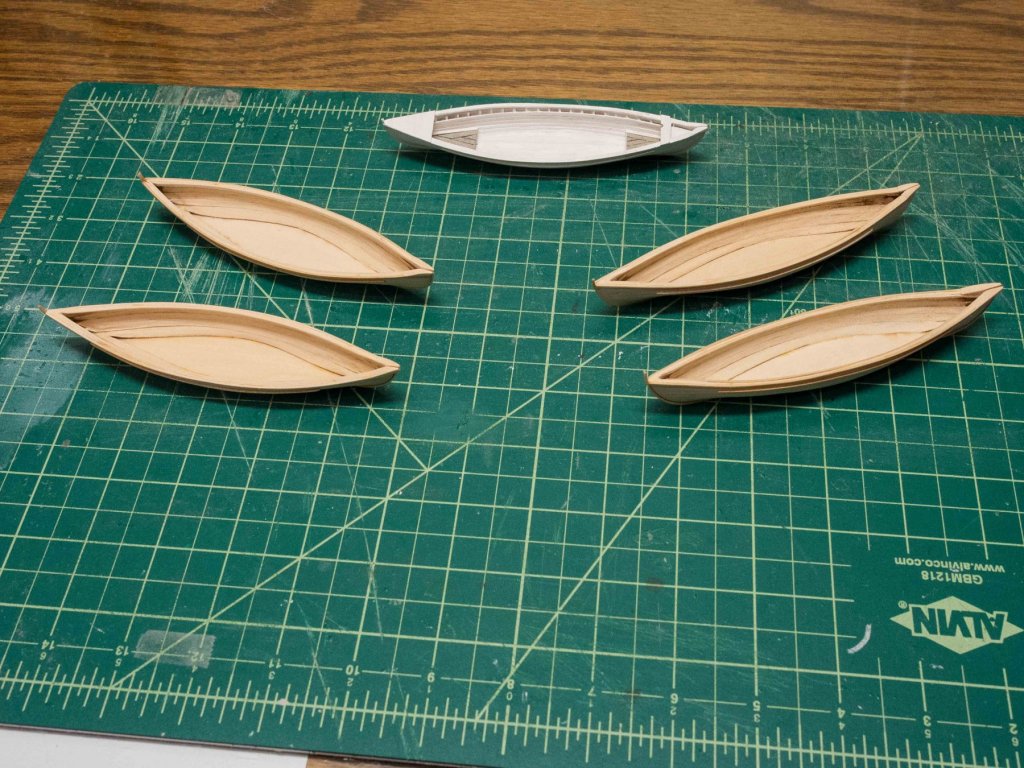
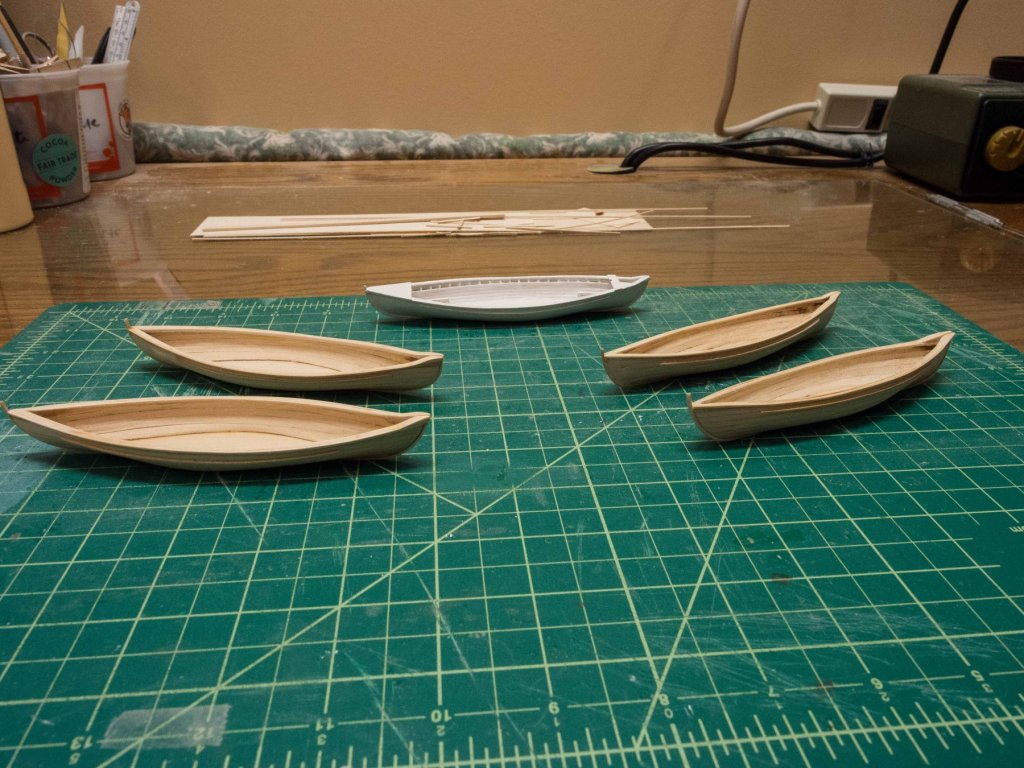
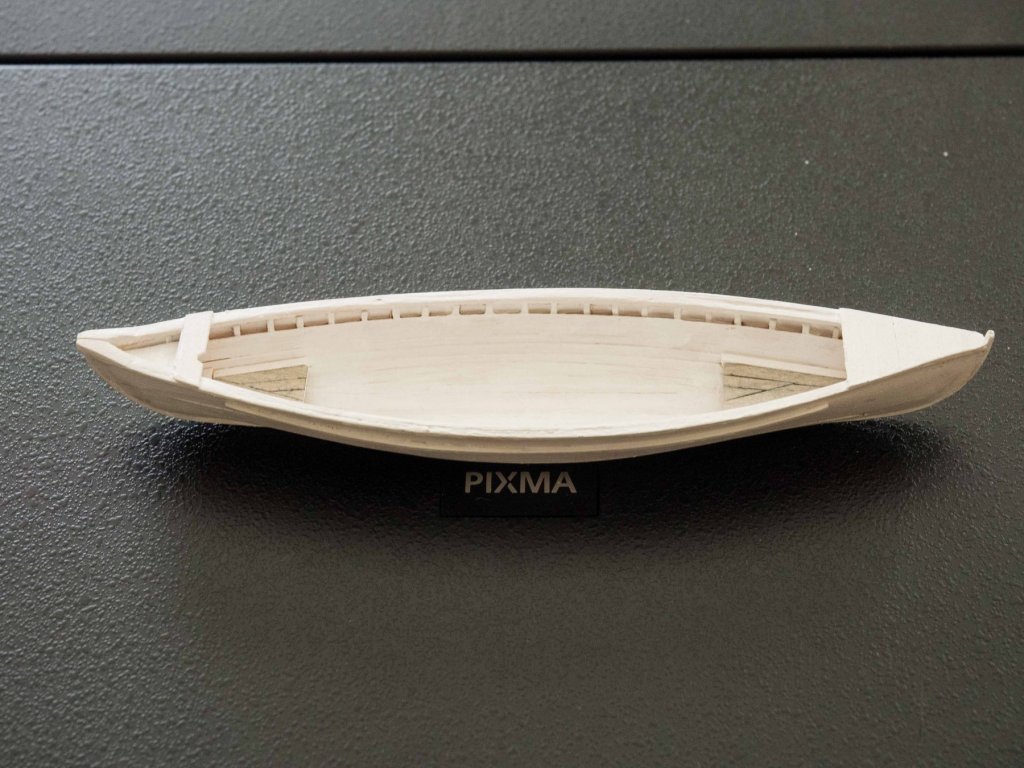
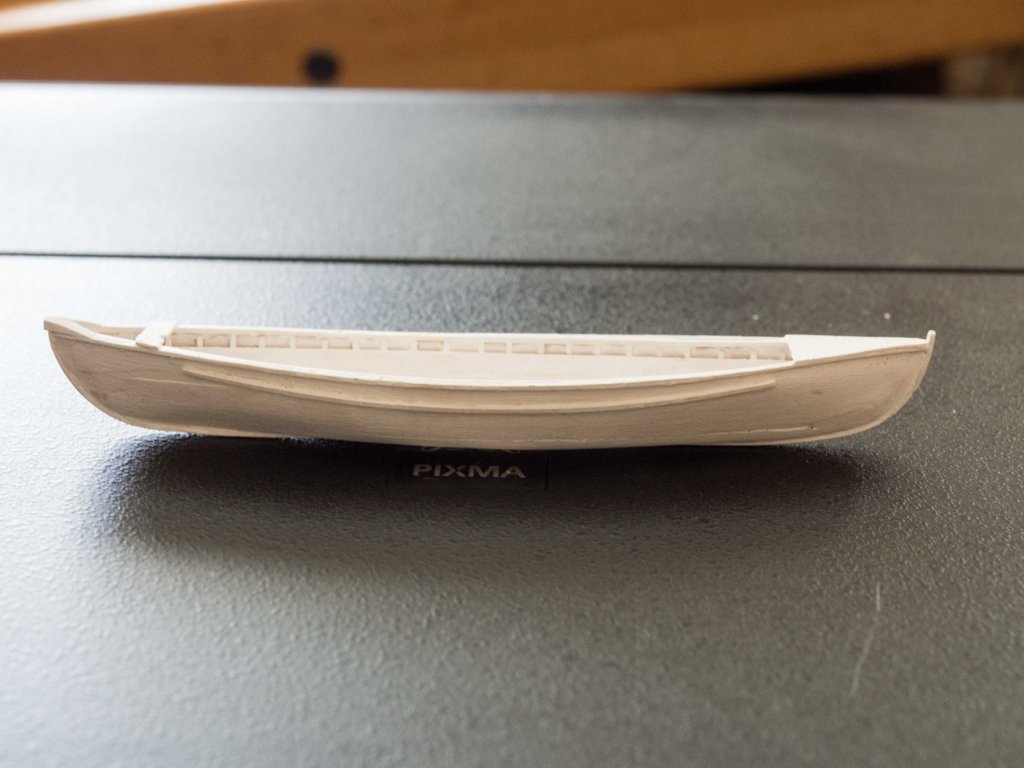
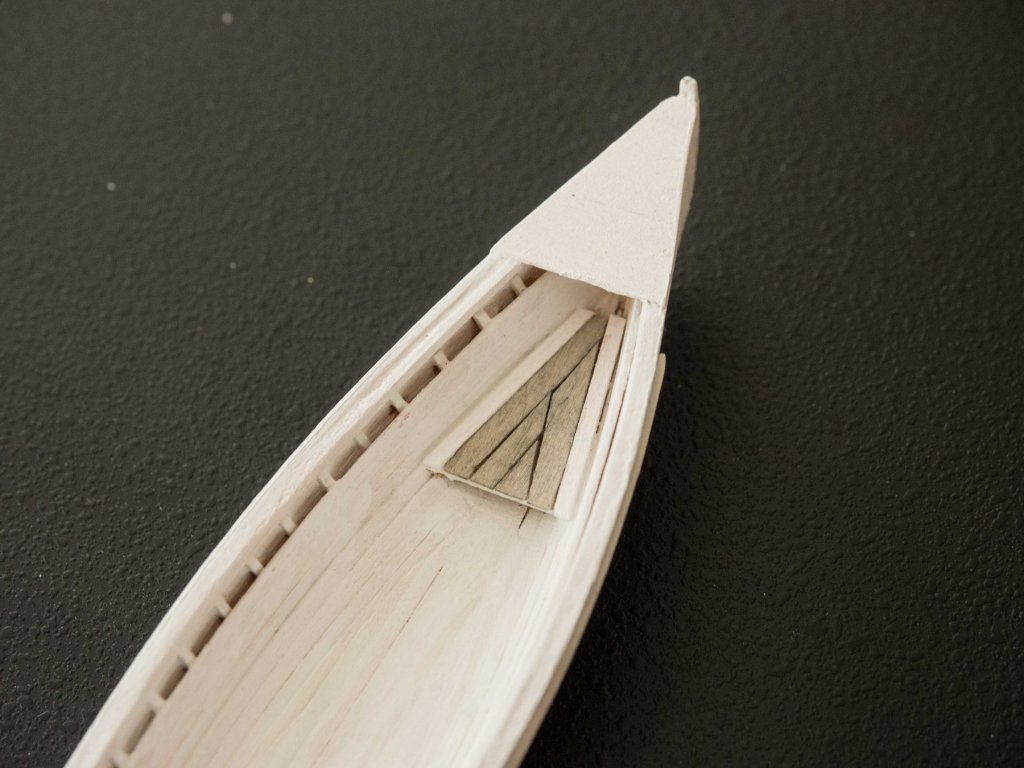
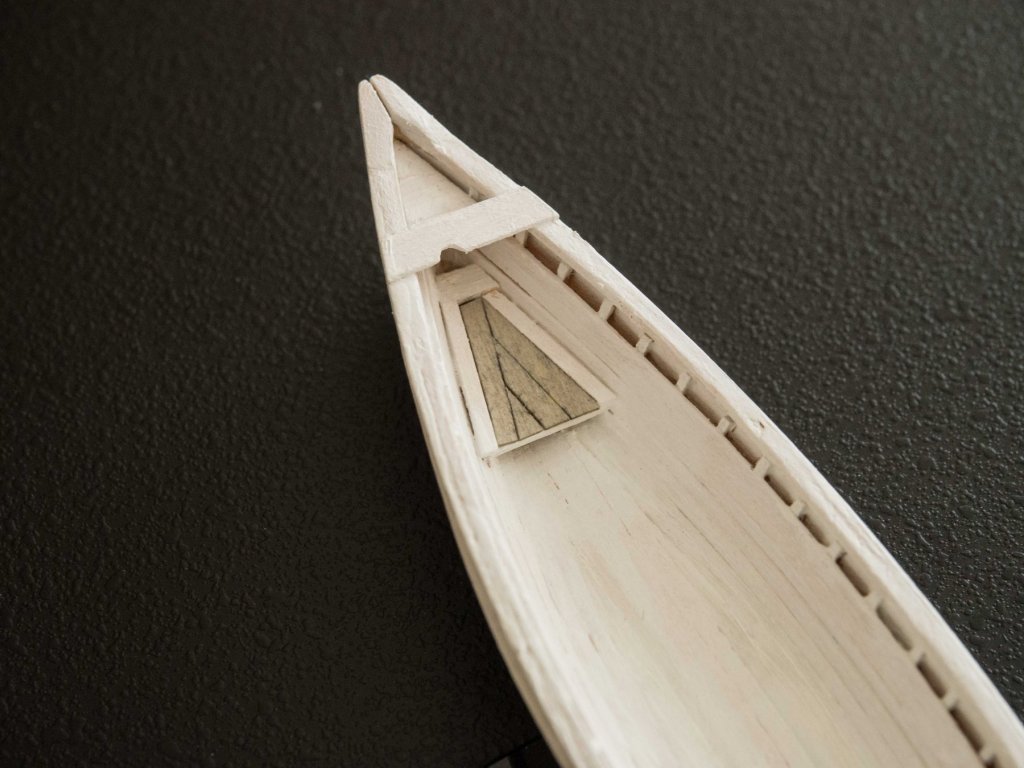
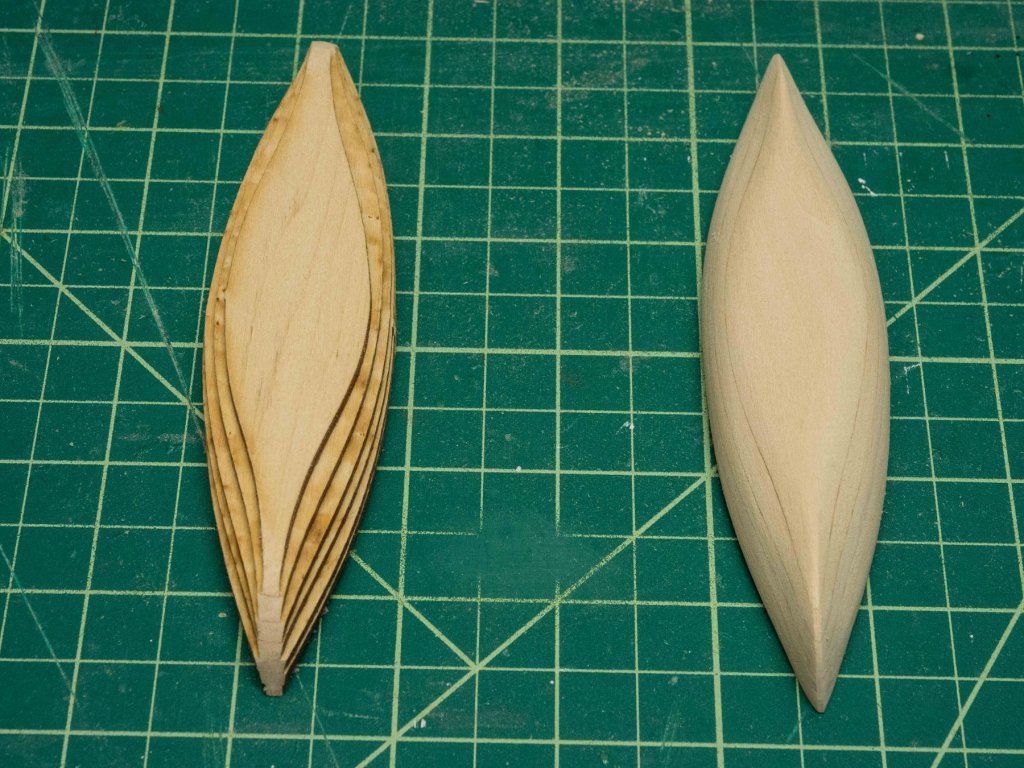
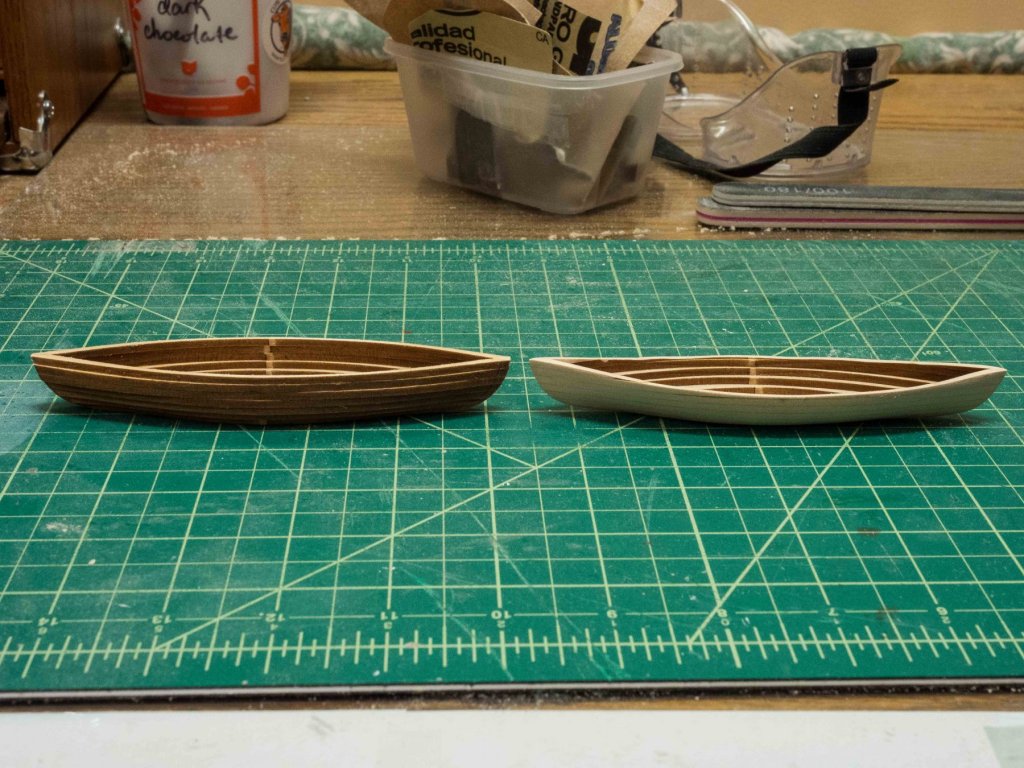
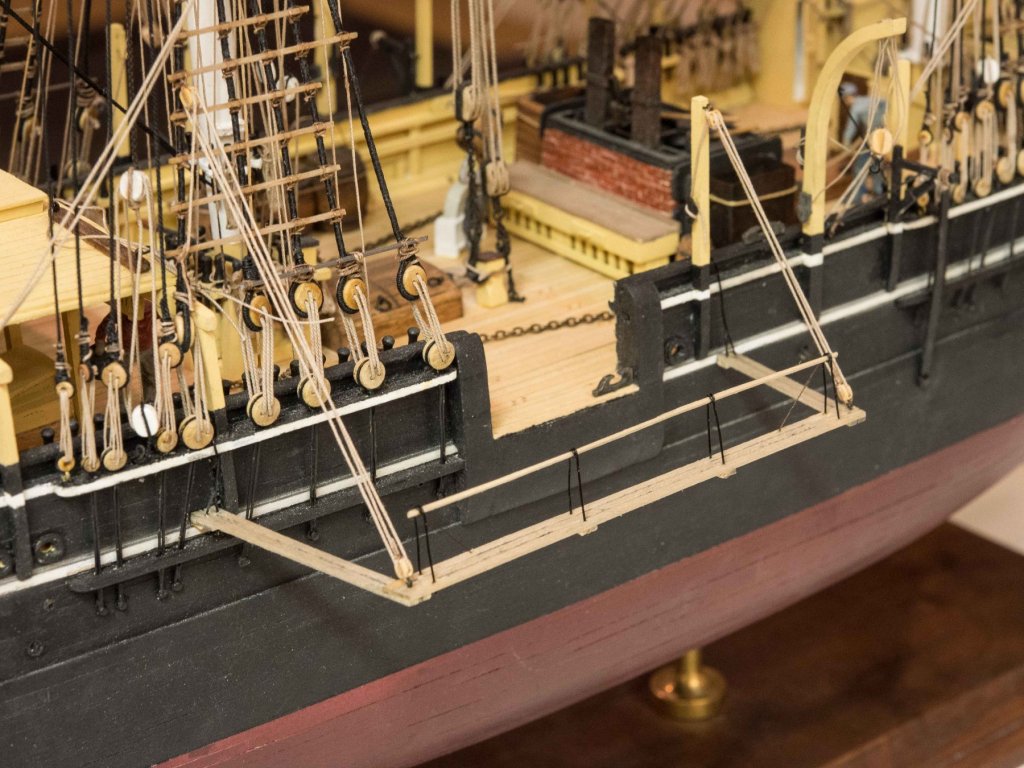
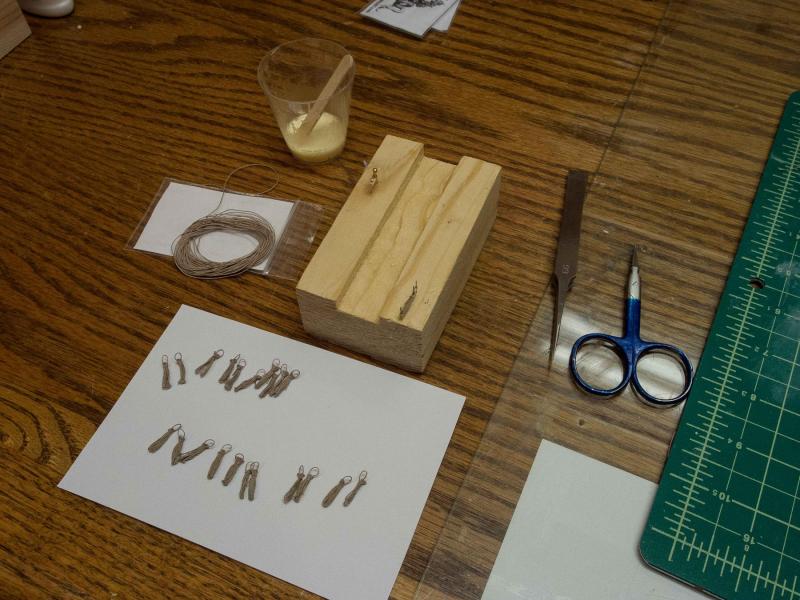
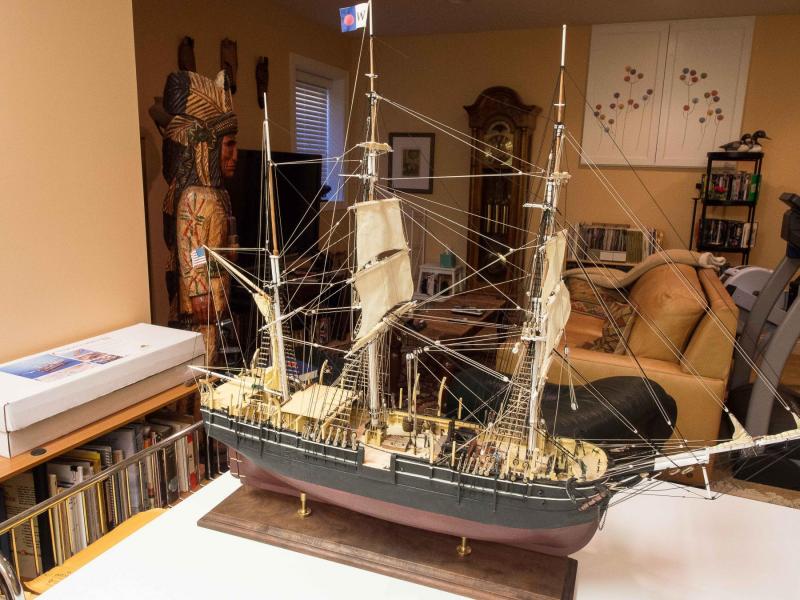
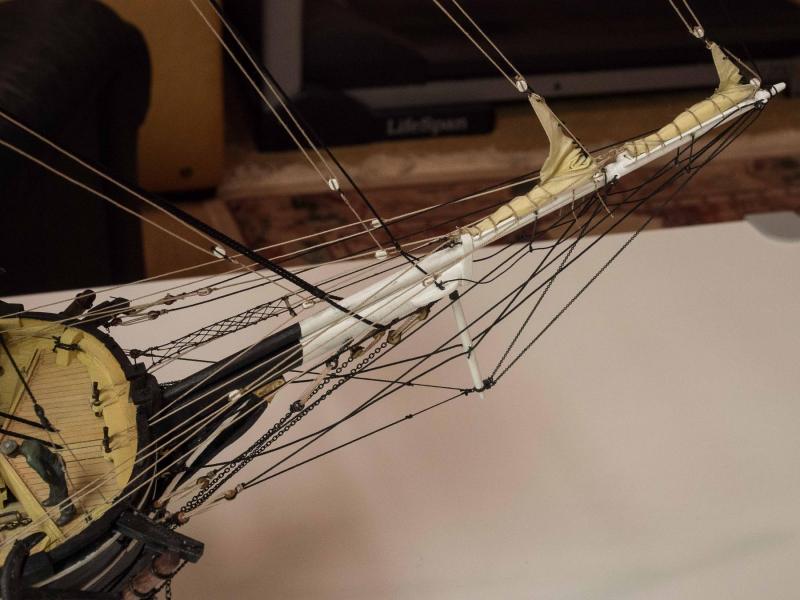
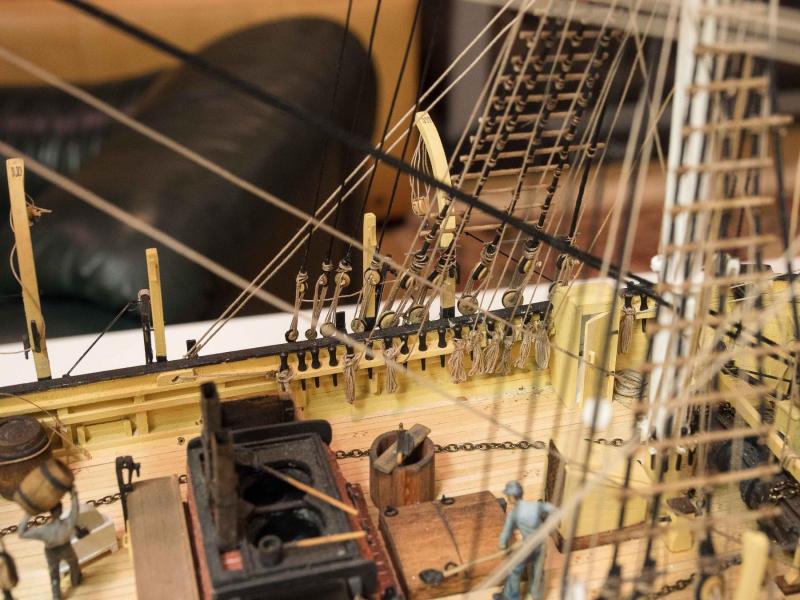
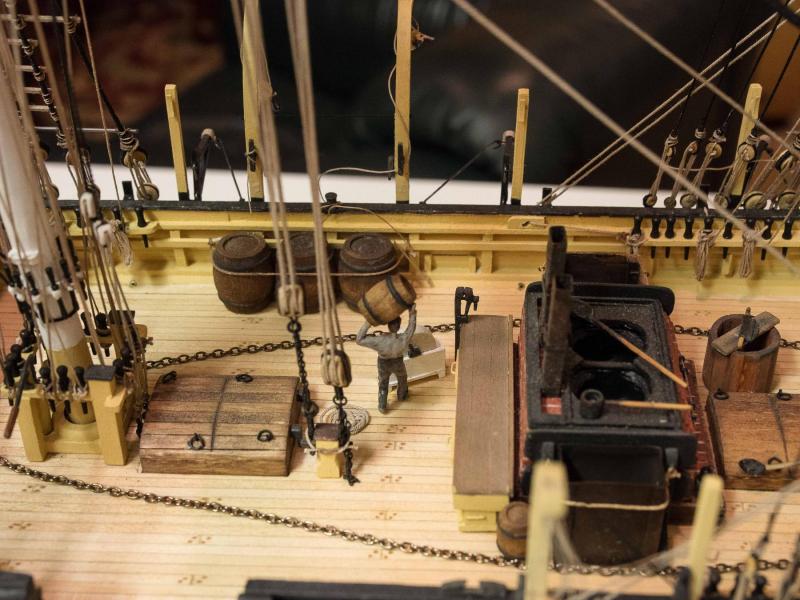
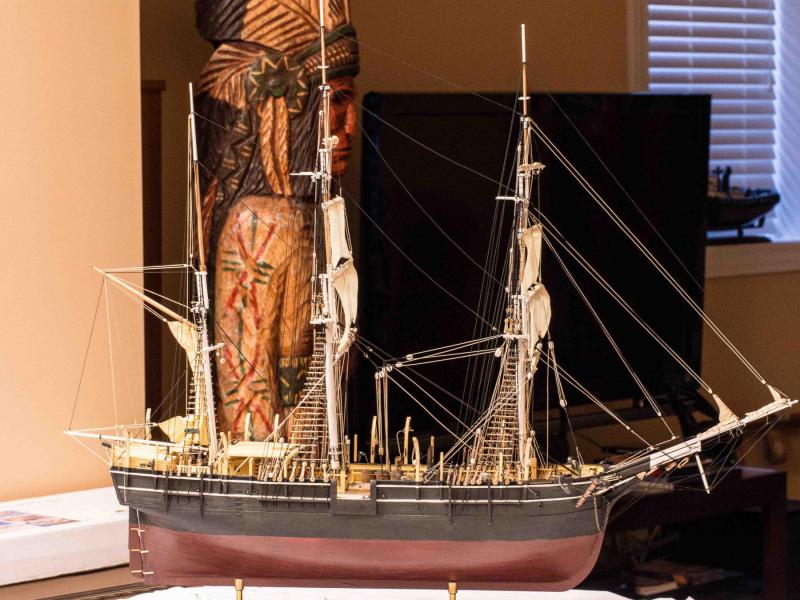
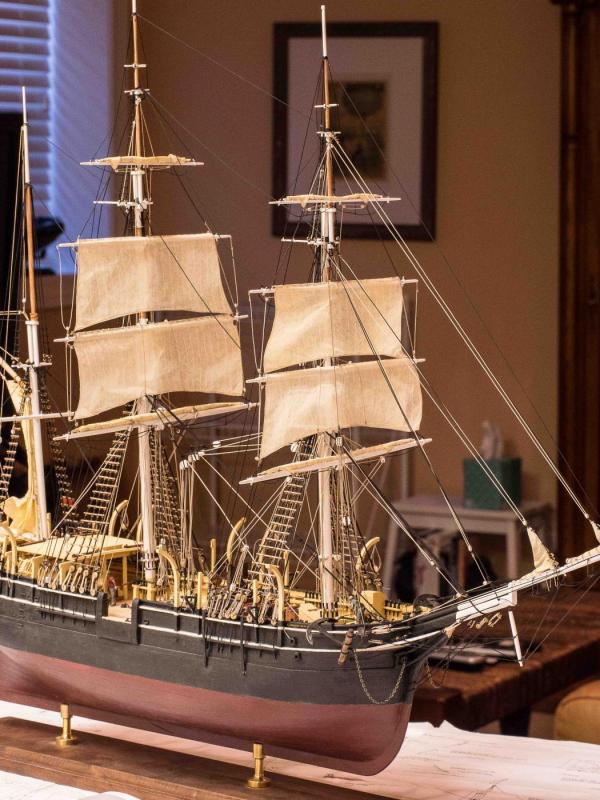
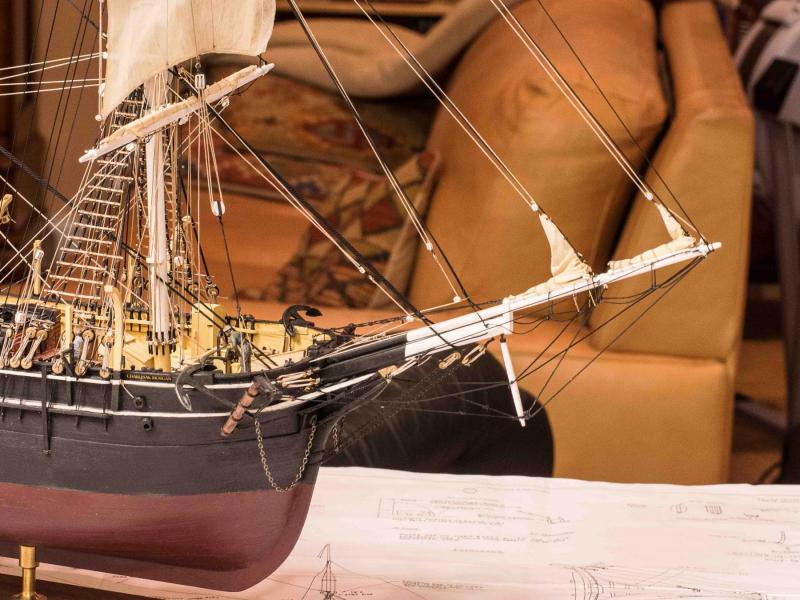
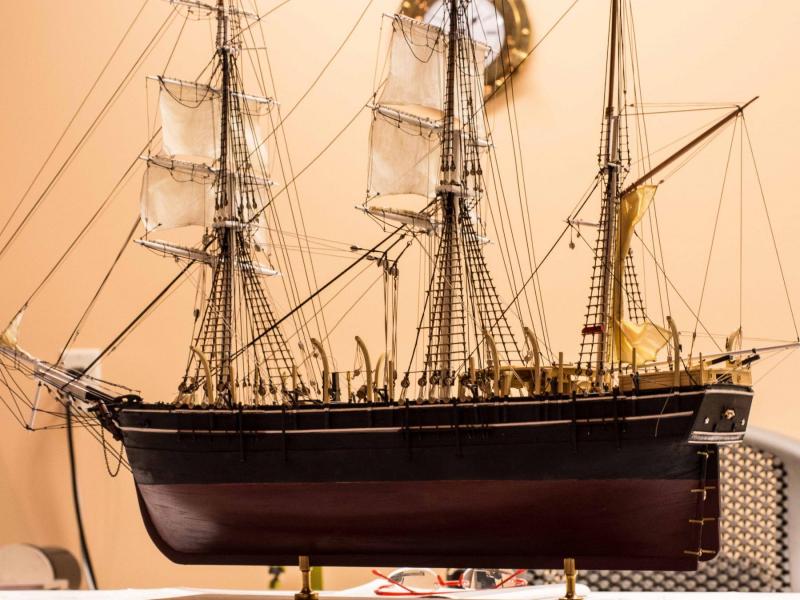
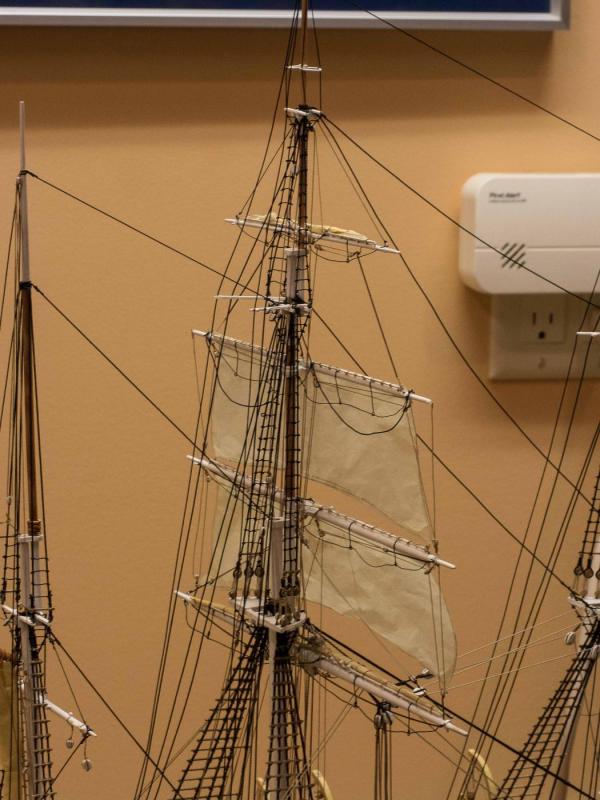
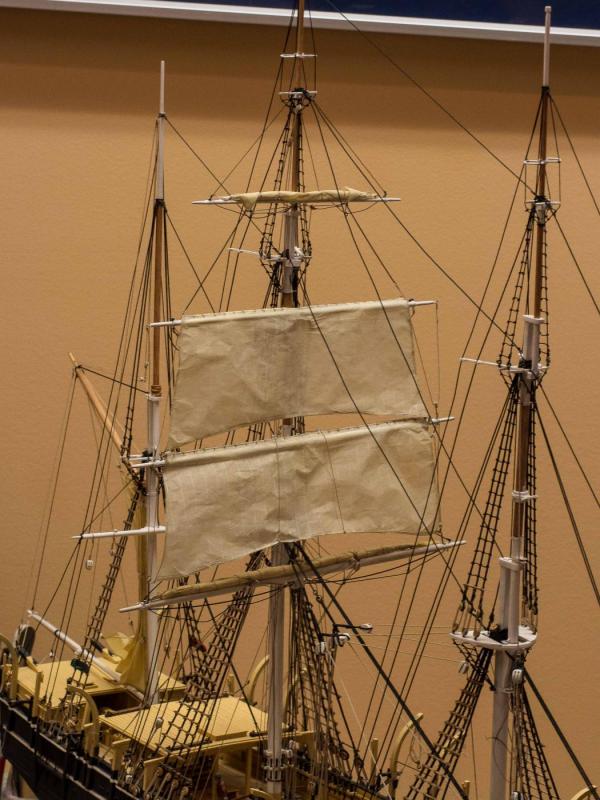
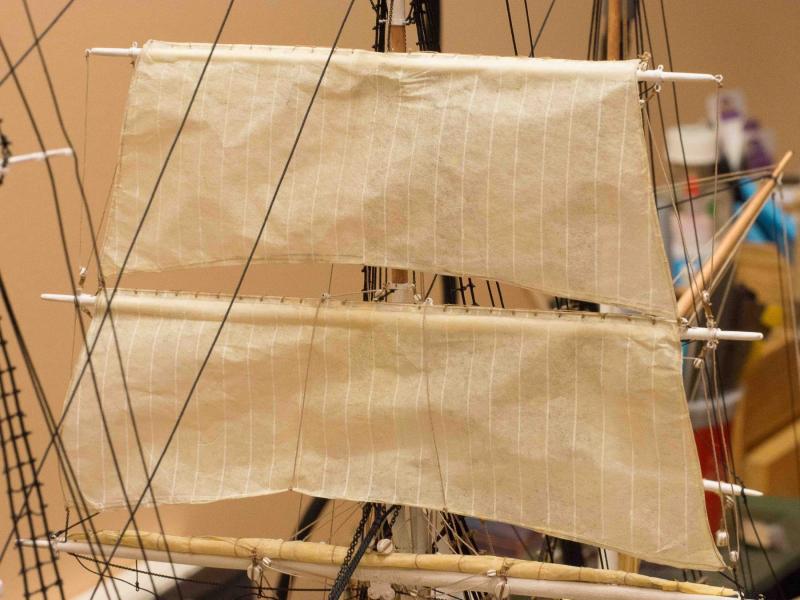
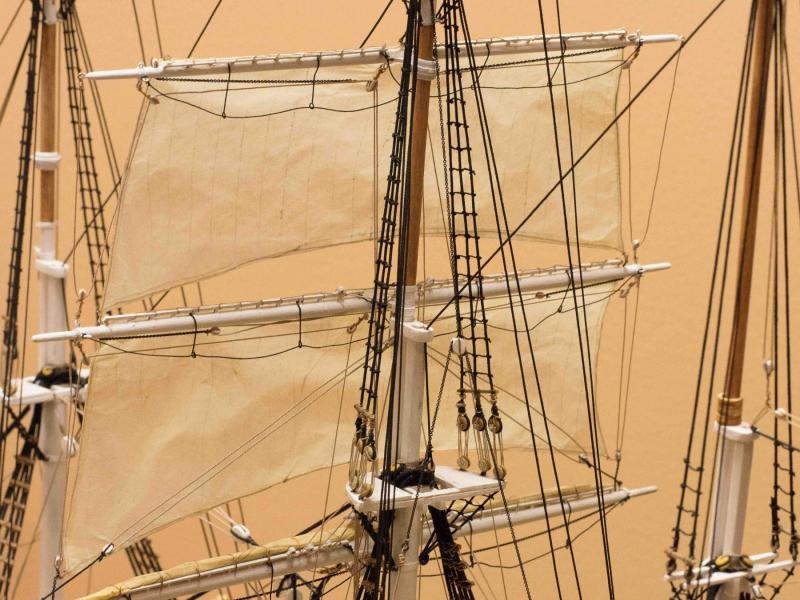
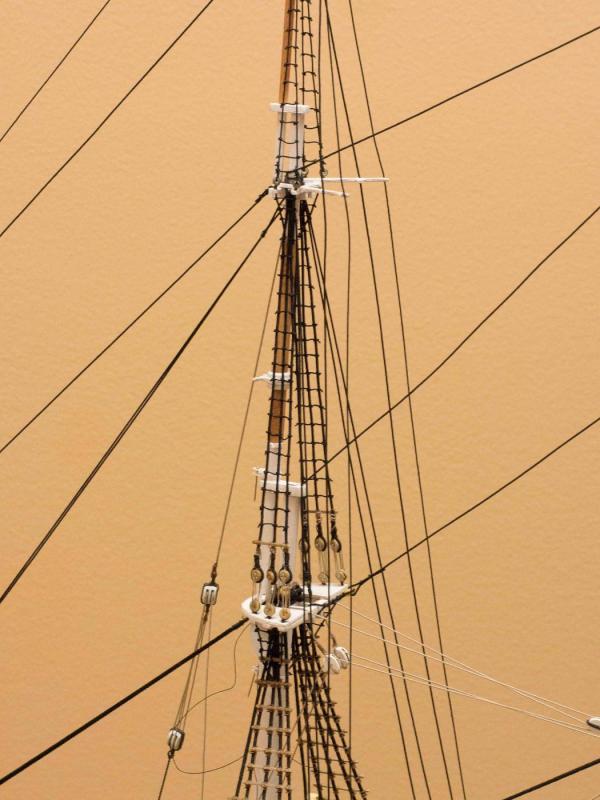
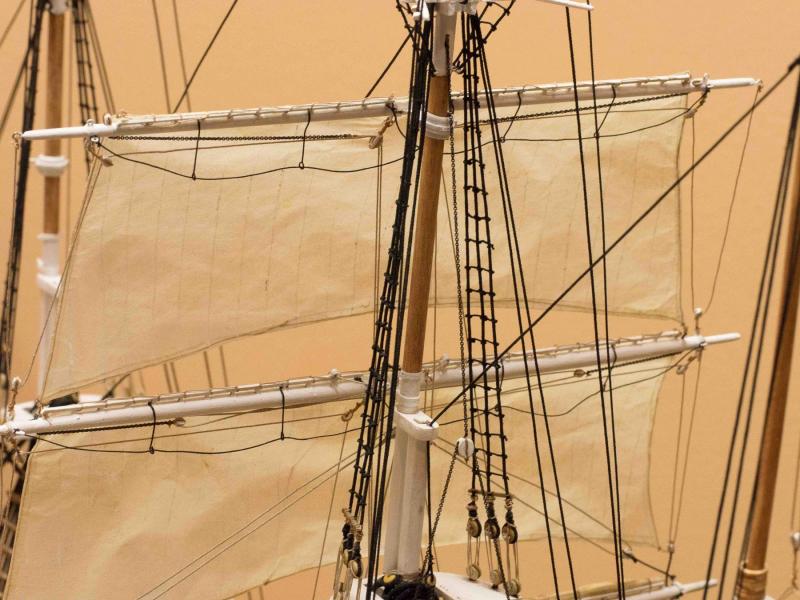
Charles W Morgan by Brucealanevans - FINISHED - Model Shipways
in - Kit build logs for subjects built from 1801 - 1850
Posted
Rib (ends) glued in place on all four boats, and tapered towards the lower end so that the ceiling boards will lay well.
First ceiling board glued in place on all four boats.
I'm going to do these in parallel; it's psychologically easier than doing a lot of work on one and then starting all over again on two, three, and four.
I'm using some boxwood 1/32 x 1/16 strips I have for these ceiling boards, and used boxwood 1/32 x 1/32 for the ribs. I've used up all the small basswood strips that came with the kit as well as additional ones I got some time ago. The boxwood is a pleasure to work with - the ease with which fine chisel work for the tapering can be done is night and day over the basswood.
Next project, whatever it is, will use basswood (or limewood) kit wood only for first planking where a second one will be done. Given the time I spend working on these (3 years plus on the Morgan) the investment in good wood is reasonable. I wish I'd made the skylight on the Morgan from boxwood so I could have had the correct number of rods - the basswood uprights split if I tried to drill the correct number of holes for the rods, so I had to reduce the number.